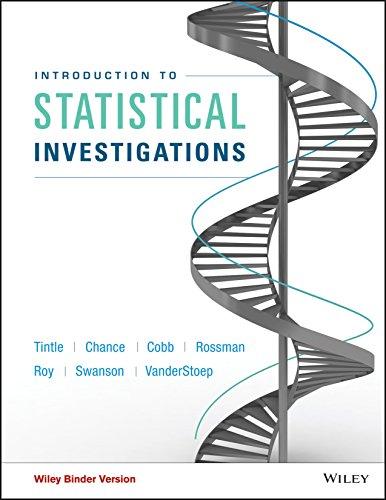The six graphs are for two different sample sizes: one small (25) and one large (225). Your
Question:
The six graphs are for two different sample sizes: one small (25) and one large (225). Your challenge in this exercise is to figure out how to tell the difference between a small-sample curve and a large-sample curve. Exercise 1.4.33 illustrates that the form of the alternative hypothesis determines the shape of the curve.
a. Consider two sample sizes with the same distance: If Buzz is right 30 times out of 32, the p-value will be _________ than if Buzz is right 15 times out of 16. (Choose from: higher, lower, can’t tell—it depends on the alternative).
b. More generally, for any given value of the distance p̂ − π (x-axis), the p-value is smaller when the sample size n is _______ (larger, smaller, can’t tell—it depends on the alternative).
c. Th is means that compared to the graph for n = 225, the graph for n = 25 ____________ (always lies above, always lies below, neither: it depends on the alternative hypothesis.).
d. “Above/below” is not a useful comparison. Instead, use the steepness of the curve. Compared to the graph for n = 225, the graph for n = 25 is ________ (steeper, less steep).
Step by Step Answer:

Introduction To Statistical Investigations
ISBN: 9781118172148
1st Edition
Authors: Beth L.Chance, George W.Cobb, Allan J.Rossman Nathan Tintle, Todd Swanson Soma Roy





